|
|
Post by stephan on Nov 19, 2020 10:18:15 GMT -5
Happy Thor's day (although, technically, they are named after the "thunder spirits" of the American Northwest, who dwelled on what are now known as Mt. Jefferson and Mt. Hood... these are the "eggs" of the thunderbolts these spirits hurled at each other. The Native (Molalas, Kalapuyans, Chinookan Clackamas, Shinookan Wascos, Northern Paiute or Sahaptin?) names for these mountains, at that time, were Seekseekqua and Wy'east, respectively). In the spirit of the "original" Oregonian thundereggs, here are a couple of Oregonian specimens: Cherry Creek:  Cherry Creek Thunderegg Cherry Creek Thunderegg by Stephan T., on Flickr McDermitt:  McDermitt Thunderegg McDermitt Thunderegg by Stephan T., on Flickr |
|
Fossilman
Cave Dweller 
Member since January 2009
Posts: 20,722 
|
Post by Fossilman on Nov 19, 2020 10:58:05 GMT -5
Thunderegg cores are very cool... I have a single, double and triple core (cores)......
|
|
|
|
Post by woodman on Nov 19, 2020 11:04:27 GMT -5
Since my Thursday is swamped, am posting some more of what I think are T-eggs. After all, to paraphrase a song, It's Thursday somewhere. What started my obsession with T-eggs and Geodes, over 50 years ago. Was given this by some Snowbird neighbors. They spent Summers on the lake in WI, 1/4 mile down the road from us. Winters in AZ. It is amazing I still have it after all these years. 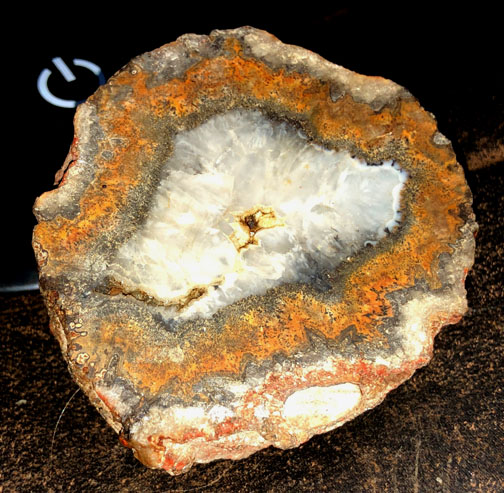 I think this one was in a box from Tommy  These were in a box from toiv0 Not all are T-eggs, but most are.   From woodman Please excuse the Pet Wood in lower right. I think the one in upper left may be a geode, as it is light weight. Dunno about the other un cut ones.  Thanks for viewing a very small portion of my T-egg collection. The blue banded one in the upper right is a limb cast from Hampton Butte. |
|
|
|
Post by woodman on Nov 19, 2020 11:07:36 GMT -5
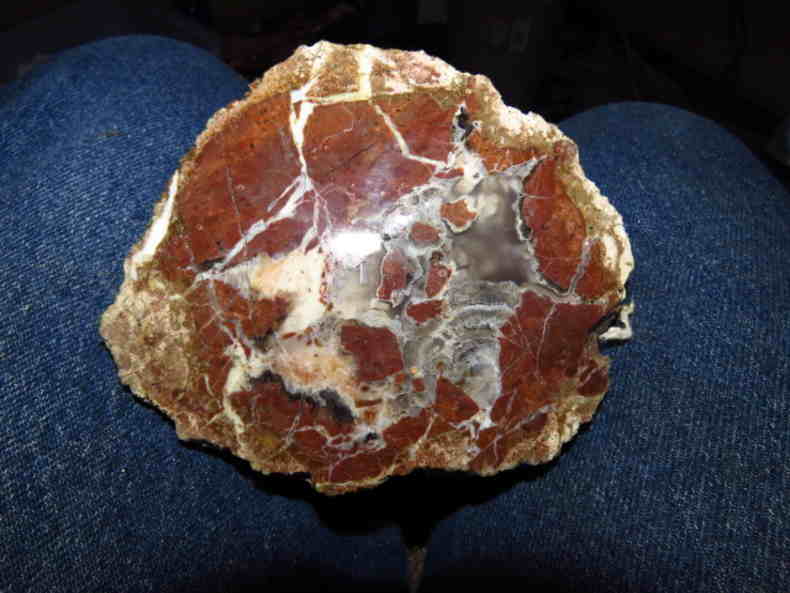 Wiley Wells |
|
|
|
Post by woodman on Nov 19, 2020 11:20:23 GMT -5
Unknown egg from an estate sale 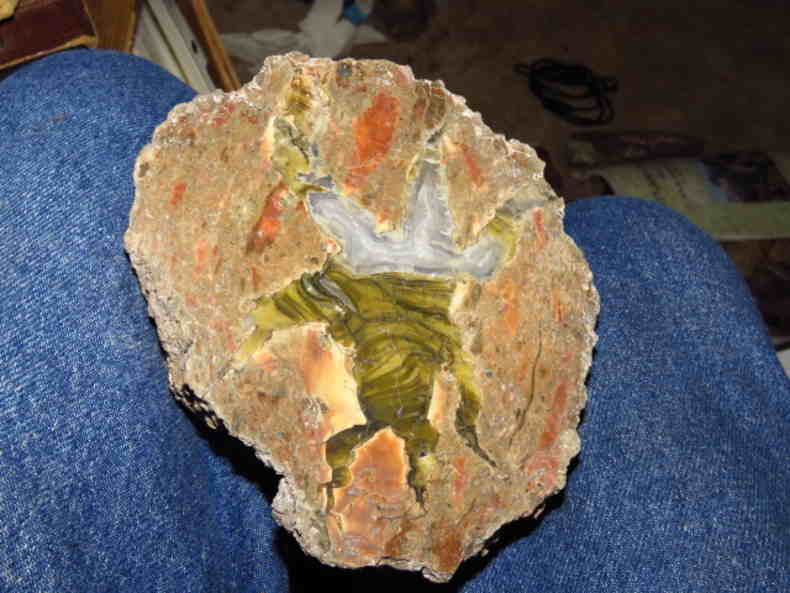 Buchanan egg 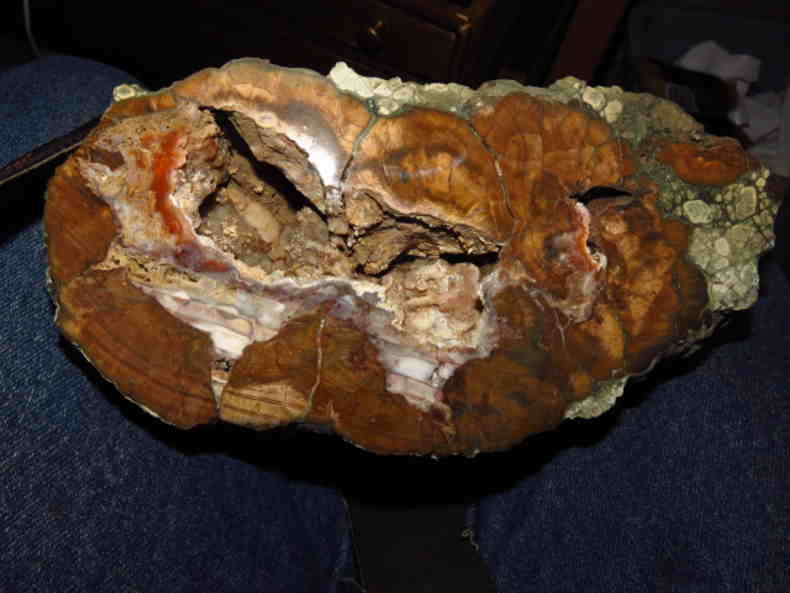 |
|
irlcjrohr
starting to spend too much on rocks
  If it does not melt, polish it.
If it does not melt, polish it.
Member since April 2020
Posts: 123
|
Post by irlcjrohr on Nov 19, 2020 13:12:16 GMT -5
Some of my small ones. The largest one is just under an inch long
|
|
|
|
Post by stephan on Nov 19, 2020 16:55:28 GMT -5
A slice of a Richardson's egg, marked up for future cabbing.  DSC_3209_Richarson's Thunderegg slice DSC_3209_Richarson's Thunderegg slice by Stephan T., on Flickr When it's done, it'll have the suggestion of a heart shape. Right now, the agate portion sort of looks like one of those old, inaccurate maps of North America. |
|
|
|
Post by woodman on Nov 19, 2020 17:29:55 GMT -5
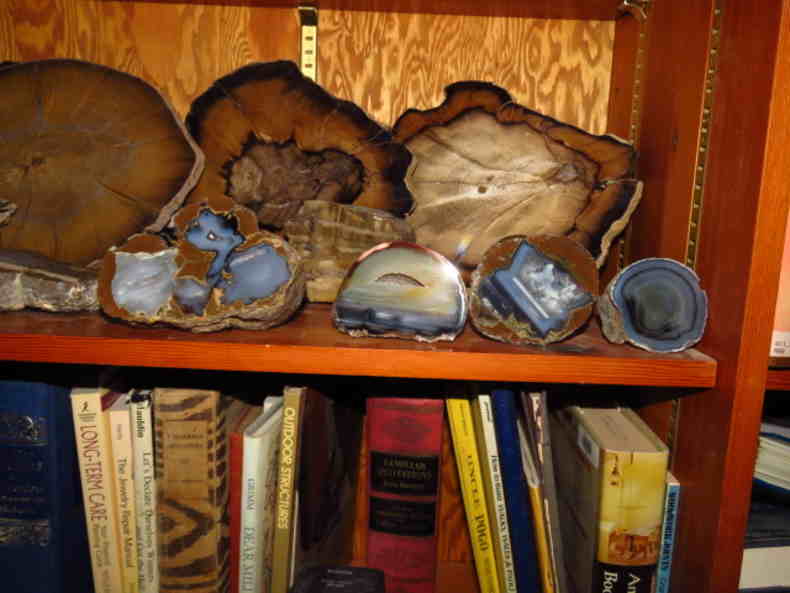 Ignore the wood, but left to right Richardson's egg, Brazilian agate, Richardson's egg and another Brazilian agate. I would call the Brazilian agates, agate nodules myself. 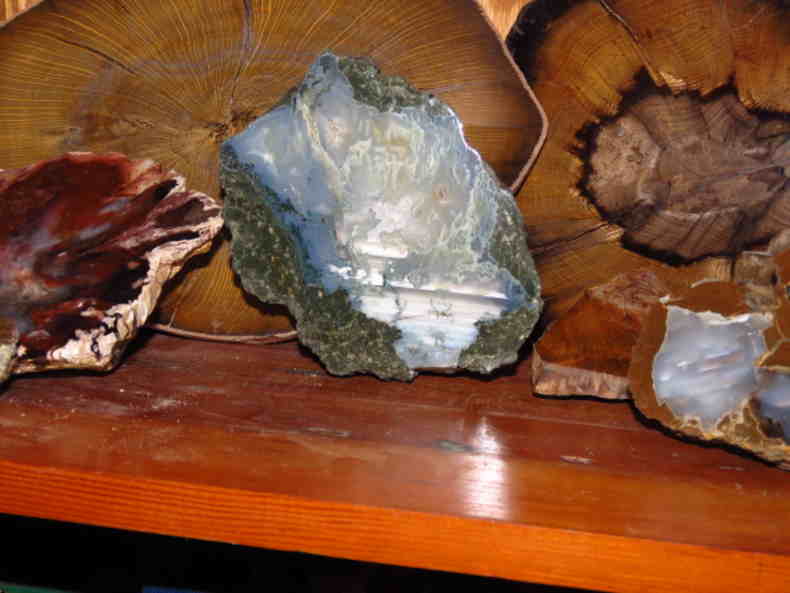 Estate sale egg, unknown location! |
|
EricD
Cave Dweller  High in the Mountains
High in the Mountains
Member since November 2019
Posts: 1,142
|
Post by EricD on Nov 19, 2020 17:39:50 GMT -5
 Estate sale egg, unknown location! That is the most awesome rainforest with a waterfally creek lit up by the sun shining in I have ever seen in a stone! |
|
|
|
Post by woodman on Nov 19, 2020 17:44:07 GMT -5
 Estate sale egg, unknown location! That is the most awesome rainforest with a waterfally creek lit up by the sun shining in I have ever seen in a stone! I have to admit that the quality of the photo is sadly lacking. The egg is MUCH better when seen in person. |
|
|
|
Post by hummingbirdstones on Nov 19, 2020 19:44:35 GMT -5
 Ignore the wood, but left to right Richardson's egg, Brazilian agate, Richardson's egg and another Brazilian agate. I would call the Brazilian agates, agate nodules myself.  Estate sale egg, unknown location! Ignore the wood, he says. Sure, like I can ignore the wood ...  |
|
|
|
Post by jasoninsd on Nov 19, 2020 19:53:25 GMT -5
I'll have to agree with Robin - hummingbirdstones - I couldn't ignore the wood either. My eyes were immediately drawn to those slabs. Those are spectacular! I'm stupefied by some of the thunder egg specimens in this thread. Some of them are so amazing! Thanks to all for posting pics!  |
|
|
|
Post by stephan on Nov 19, 2020 20:20:17 GMT -5
|
|
|
|
Post by 1dave on Nov 19, 2020 22:00:15 GMT -5
These are the outer edges or "plates" of thundereggs. You can see the cast, or imprint of the cristobalite needles that once were the thunderegg. Great and important pieces for understanding how they came to exist. 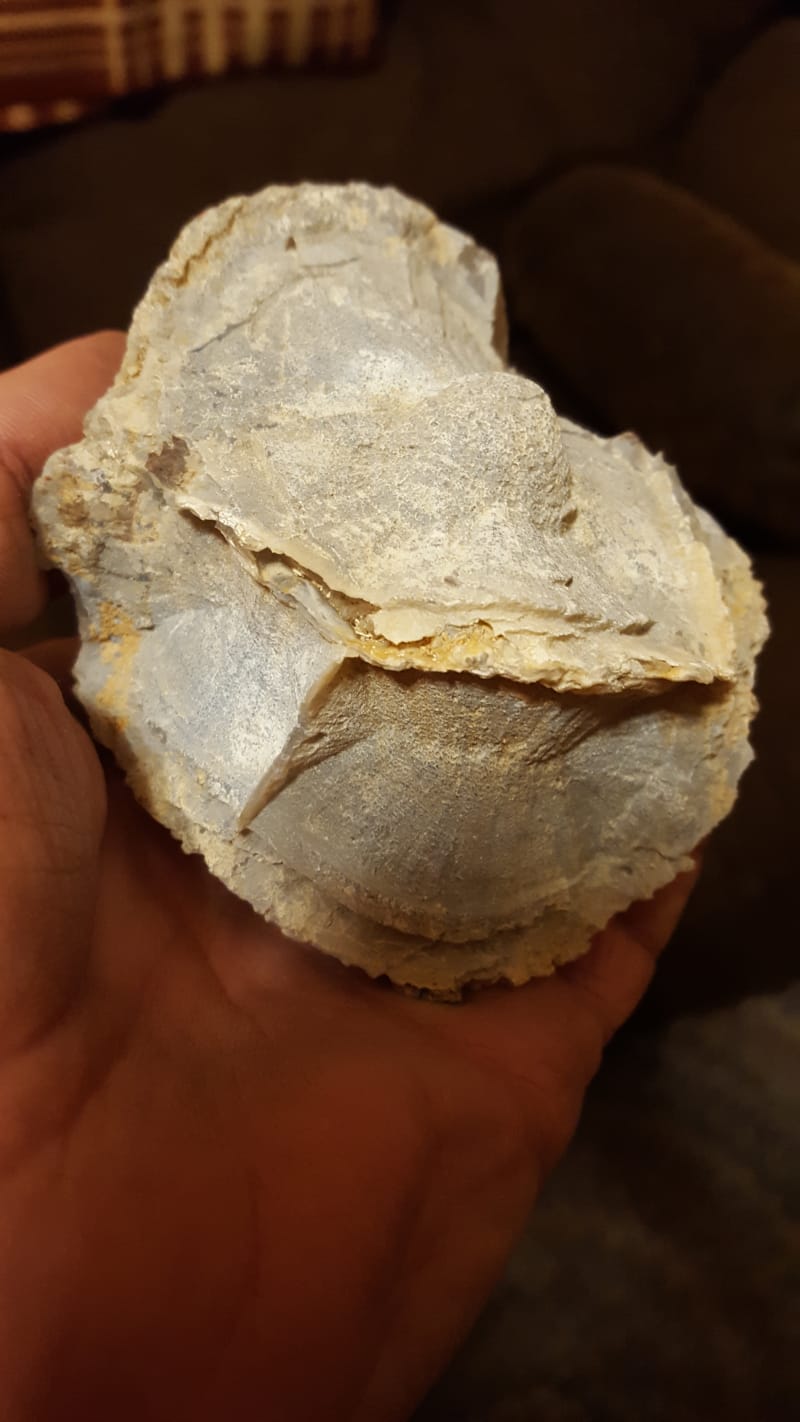 THUNDEREGG THURSDAY Let's bring a little science into the thread. Here's a mysterious specimen that probably isn't a thunder egg but is closely linked to how they are created. Who can tell us what we are looking at? I know that 1dave knows what it is. 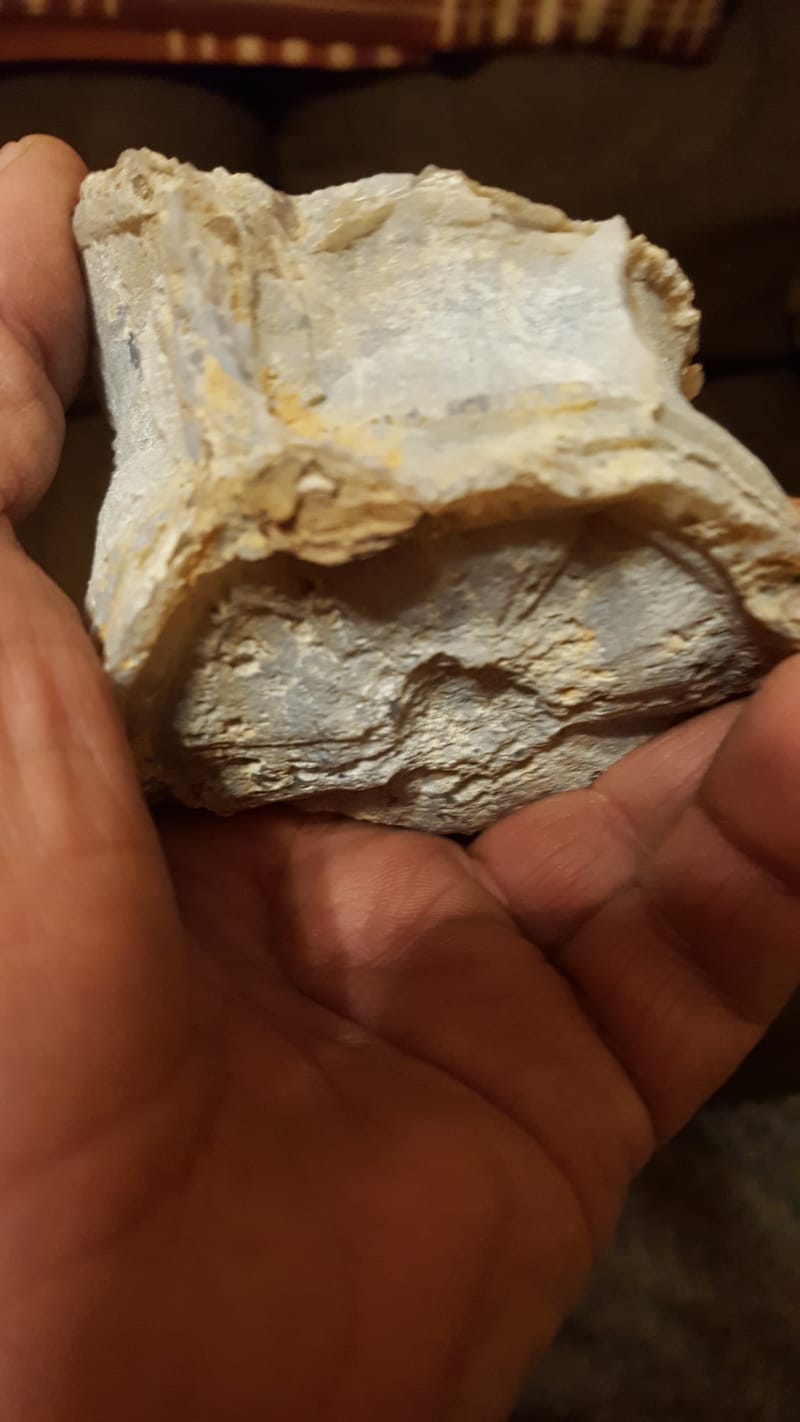 |
|
|
|
Post by 1dave on Nov 19, 2020 23:38:40 GMT -5
THE SWAMP MONSTER ! The process: 1. A MAGMA chamber deep in the bowls of the earth, heat melting the silica rocks above, the nature of the magma slowly changing. Melting rocks cools the magma, just as ice cubes cool your drink - BUT molecules moving around to form crystals warm the magma up again! heating, cooling, heating, cooling, over and over again! Above 1,100 degrees C, silica needles we call cristobalite begin forming. The magma is constantly being heated up from below. layers form as convection cells rise, circulate and fall, creating billions of flow planes - WHERE SILICON NEEDLES MEET AND FORM INTO SPHERES! The local action warms that part of the magma too much for cristobalite to continue to form, but just right for the spheres to be covered with a thin layer of feldspar to cover the spheres. Cooling brings a new layer of needles, then another coating of feldspar, over and over, thousands of times as the spheroids grow from specks to inches in diameter. 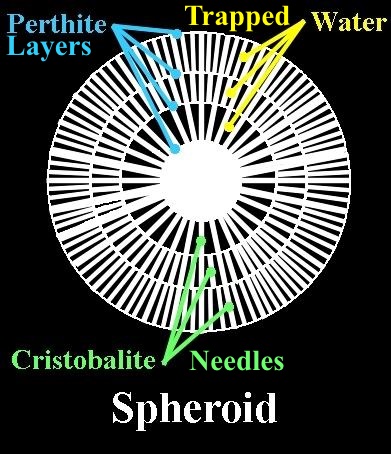 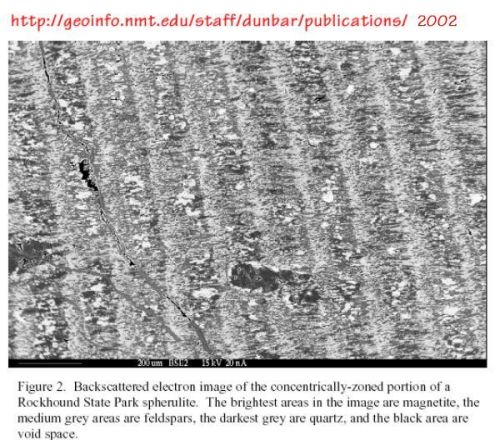 IMPORTANT! Between those needles are trapped water molecules under too much pressure to be allowed to flash into steam! 2. Eruption! Magma breaks forth to the earth's surface to become rhyolite or obsidian. Not basalt because it contains too much silica. The spheres carried along in the flow have less external pressure, and the water is slowly allowed to expand into steam, rupturing the spheres. The closer they are to the surface, the less pressure, the more the steam can expand, and the larger the ruptured spaces become. 3. The obsidian or rhyolite cools. The steam cools and condenses back into water, and the new hollowed spaces suddenly become VACUUMS! Now picture in your mind how this empty space was filled by whatever surrounded this egg! Unknown egg from an estate sale  |
|
|
|
Post by fernwood on Nov 20, 2020 5:10:18 GMT -5
woodman The unknown estate sale egg reminds me of a Kokopelli.
|
|
kyoti
has rocks in the head
  
Member since June 2020
Posts: 542
|
Post by kyoti on Nov 20, 2020 9:50:26 GMT -5
woodman I love the pastel egg but my eyes were glued to that beautiful red slab of pet wood in the left corner.  @jadedvision that is one gianormous slice of thunderegg! Pretty too.
|
|
|
|
Post by woodman on Nov 20, 2020 11:28:27 GMT -5
woodman I love the pastel egg but my eyes were glued to that beautiful red slab of pet wood in the left corner.  @jadedvision that is one gianormous slice of thunderegg! Pretty too. That red piece of pet wood is from HUbbard Basin in Nevada, not Hubbard, Cherry Creek Nevada!!!! was a gift from digging partner!! |
|
|
|
Post by woodman on Nov 20, 2020 15:58:34 GMT -5
woodman The unknown estate sale egg reminds me of a Kokopelli. That it does!!! |
|
|
|
Post by 1dave on Nov 22, 2020 7:30:02 GMT -5
Costal Mts VS Basin & Range Thundereggs forum.rocktumblinghobby.com/post/971453/threadLets check with the master on thundereggs - Richard Paul Colburn, the Geode Kid. The following quotes (extended for those that want ALL of the information) and pictures are from his writings in the Geode Kid Free Club and his CD "The Formation of Thundereggs."  |
|